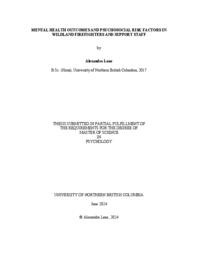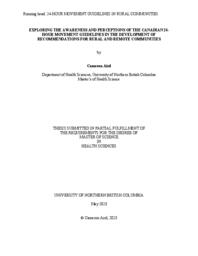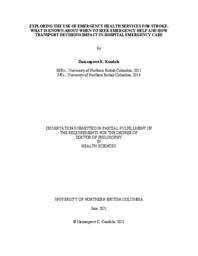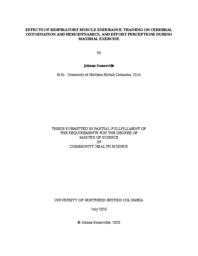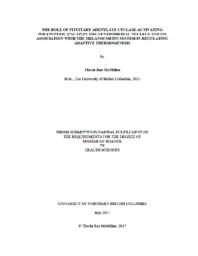Pelletier, Chelsea
Person Preferred Name
Chelsea Pelletier
Related Works
Content type
Digital Document
Origin Information
Content type
Digital Document
Origin Information
Content type
Digital Document
Description / Synopsis
The present study evaluated the awareness and knowledge of the Canadian 24-Hour Movement Guidelines in rural and remote communities, and explored how to adapt guideline communication material to improve their impact and relevance. People living in rural and remote communities completed a cross-sectional survey (N = 76) and individual interviews (N = 12) to explore what is known about the guidelines and provide recommendations to help adapt the materials to local context. Overall, most participants were aware of the guidelines (44.7%) and had moderate knowledge of recommendations and dosages (64.5%). Deductive thematic analysis was used to code the barriers and facilitators to meeting guideline recommendations and map them onto the Behaviour Change Wheel. Recommendations for adapting the guidelines were created which included: providing additional information on being active outdoors and at home, information discerning sedentary behaviour and inactivity, and tips to combat seasonal changes in daylight.
Origin Information
Content type
Digital Document
Description / Synopsis
Transport practices for seeking emergency stroke care remain largely underresearched and poorly understood, particularly for individuals living in small urban, rural, and remote regions. This multi-method study aims to address this knowledge gap and explores the impact of mode of transport on in-hospital stroke care and the decision-making process of seeking emergency medical attention for patients and their caregivers. Data from the Discharge Abstract Database provide information on stroke-related use of emergency health services across British Columbia. Data from the Canadian Institutes for Health Information Special Project 340 provide information on if calling emergency health services impacts the delivery of care, including the completion of neuroimaging, the administration of acute thrombolysis, and the prescription of antithrombotics upon discharge across a northern health region. Focused, semi-structured interviews provide contextual insight into the decision-making processes for seeking emergency stroke care among patient and caregiver participants in a northern health region. Stroke-related emergency health service use across British Columbia from January 2015 to March 2018 was 67.9% (N=19,849), ranging from 58.8% in Northern Health to 70.2% in Fraser Health. In Northern Health (N=784), there were differences between health service delivery areas for stroke-related emergency health service use ranging from 53.7% in the Northwest to 64.8% in the Northern Interior from January 2015 to March 2018. Similar differences in thrombolytic therapy administration and the prescription of antithrombotics were noted. The odds of emergency health service use were greater for those 65 years of age and older than those younger than 65 and lower for those in the Northwest health service delivery area than those in the Northern Interior health service delivery area. Differences were found for the completion of neuroimaging between males and females. Interviews for patient (n=12) and caregiver (n=7) participants provide complementary contextual insights and yielded three key themes, including the decision-making process following a stroke, experiences of care, and perceived gaps and areas in need of further support. This integrated knowledge translation-informed and practice-driven research addresses health services and policy priorities. Findings are anticipated to help inform the development and refinement of emergency health services in British Columbia by highlighting differences in emergency health services use across geographies and identifying factors that inform patient decisionmaking when seeking emergency medical attention.
Origin Information
Content type
Digital Document
Description / Synopsis
The primary objective of this study was to investigate the effects of a 4-week respiratory muscle endurance training (eRMT) program on the physiological and psychological aspects of central fatigue using, respectively, near-infrared spectroscopy (NIRS) and quantification of effort perceptions during maximal exercise. A secondary objective was to assess any impact of eRMT on respiratory health and exercise performance. This study compared pre- and post-eRMT data from the same group of healthy adults. The results indicated that eRMT did not have any effect on respiratory function, exercise time to exhaustion, or physiological responses to exercise but significantly decreased ratings of perceived exertion (RPE) during exercise. An increase in the concentrations of oxygenated hemoglobin [O2Hb], deoxygenated hemoglobin [HHb], and total hemoglobin [tHb] during exercise was observed post-eRMT compared to pre-eRMT, and this increase differed by hemisphere. Based on these preliminary findings, we suggest an eRMTinduced left-to-right hemodynamic shift during exercise, consistent with the change from a novel to a learned task.
Origin Information
Content type
Digital Document
Origin Information


